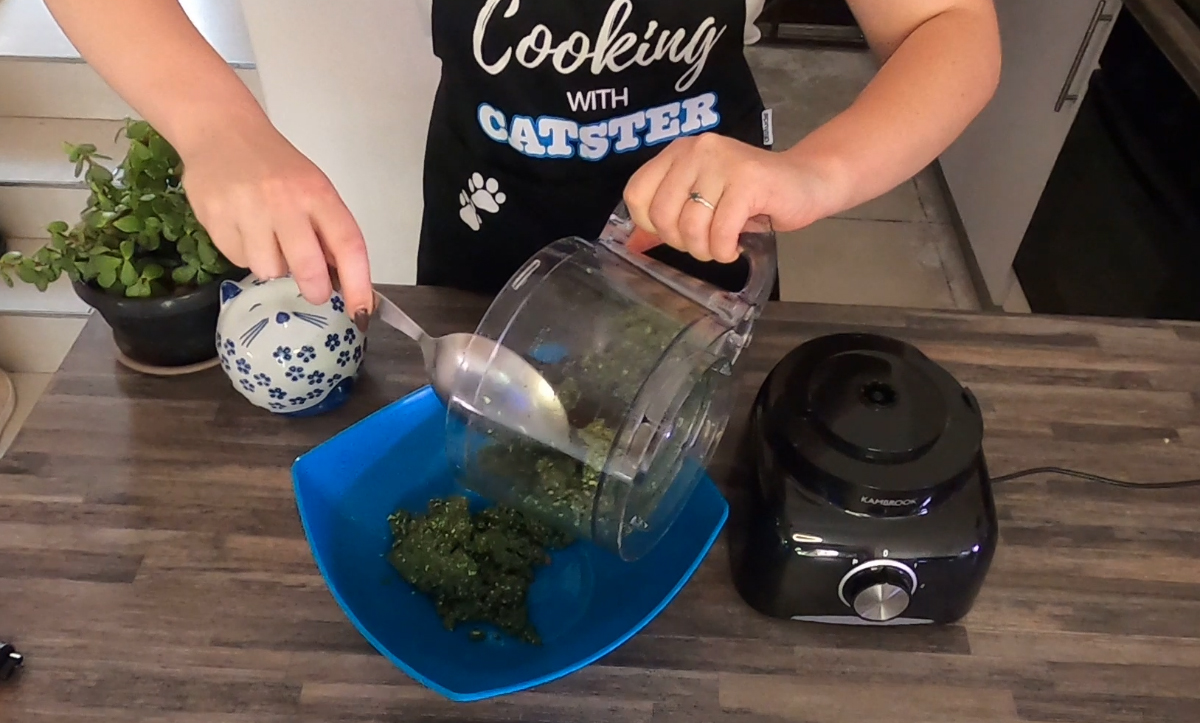It’s not unusual to browse social media and see someone preparing an at-home meal for their beloved pets. For me, the fascination with these posts isn’t the meal in question, but rather how I almost always see comments that allude to the time commitment it would take to prepare such a meal for their pet every day.
Having recently been on a meal plan for myself (prepared by a licensed doctor and nutritionist, of course), I often find myself doing a great deal of meal prep on the weekend. This makes the task of figuring out what to eat daily very easy for me. In turn, this makes it more likely that I’ll stick to my meal plan.
While cooking up my weekly meals over the weekend, I coincidentally had a request from my client to offer her a very low-carbohydrate recipe that would work for her cat from Monday to Friday, without her having to prepare meals every evening. This was understandable, as we all know how loud our pet cats can become when they aren’t fed on time! Her cat, Ivy, prefers chicken. Therefore, I whipped up a recipe for Ivy that would last her an entire week!

Recipe of the Week – Low-Carb Chicken
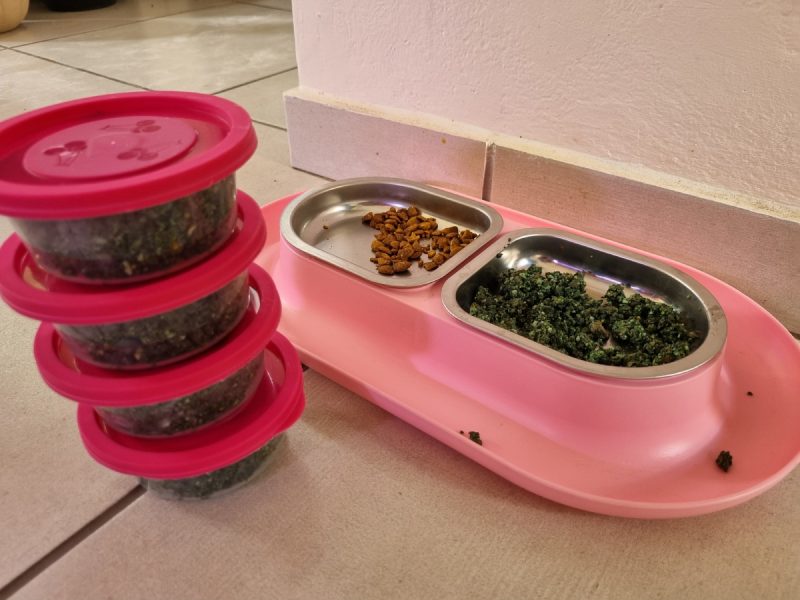
Important!
This is a complete and balanced recipe that was made for a cat for whom I had a complete medical and nutritional history. It is considered complete and balanced for that cat only.
This recipe is safe for all healthy adult cats, but it may or may not be complete for your cat. As such, it’s very important to check every recipe with a veterinary nutritionist before offering it to your cat.
The recipe I prepared for my client required the following ingredients
| Ingredient | Amount (grams) | Amount (oz) |
| Chicken hearts | 328.5 grams | 11.6 |
| Chicken eggs (whole) | 132 grams (approximately 3-4 medium-sized eggs) | 4.7 |
| Chicken breast (no skin, no bone) | 65.7 grams | 2.3 |
| Adult Multivitamin/Multimineral (Brand: Centrum) | 6.57 grams | 0.23 |
| Spirulina Powder | 6.57 grams | 0.23 |
| Psyllium Husk Powder | 1.65 grams | 0.06 |
Preparation:

Instructions:
- Begin by adding water to a pot large enough to boil eggs in and bringing this water to a boil.
- With the water boiling, add your eggs to the water. Boil the eggs until they are hardboiled (approximately 4-5 minutes on high heat).
- Remove the hardboiled eggs from the water and allow them to cool. Important: weigh the eggs once they are peeled to ensure they meet the recipe’s requirements!
- In another pot or saucepan, bring some water to a very gentle heat – approximately 165 °F (73.9 °C). Ensure that this pot or saucepan has a lid.
- Slice the chicken breast into portions roughly the size of the chicken hearts.
- Add the chicken hearts and cut-up chicken breast pieces to this second pot and put on the lid.
- Cook the chicken breasts and hearts for the least amount of time necessary for them to cook all the way through (usually around 3-4 minutes).
- Once cooked, turn off the stove and remove the pan from the heat source. Gently scoop out the hearts and breast pieces from the water and transfer them to another bowl. Allow them to cool. Important: weigh the meat to ensure it matches the requirements for the recipe!
- With all 3 ingredients cooked (eggs, hearts, and breast), slice, chop, mince, or dice all the components into similar-sized portions (depending on your cat’s preference).
- Finely crush the multivitamin/multimineral supplement into a powder (hint: a food processor works wonderfully for this step!).
- Add the spirulina powder, psyllium husk, and the powdered multivitamin/multimineral supplement to the bowl containing the other cooked ingredients. Ensure you sprinkle these evenly over the food. (Tip: If your cat prefers minced food, you can finely chop all the cooked ingredients in a food processor with the powders and supplement!)
- Portion out the final mixture into meal-sized portions for your cat.
- Enjoy!
[/su_list]
Key Nutritional Information
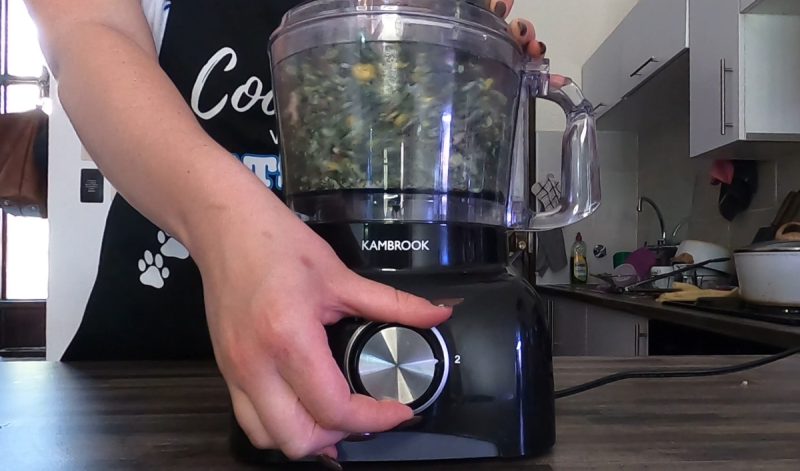
| Macronutrient | As Formulated | Dry Matter | %kcal |
| Protein | 16.08 % | 57.50 % | 44.42 % |
| Fat | 8.64 % | 30.90 % | 53.71 % |
| Moisture | 72.04 % | – | – |
| Carbohydrates | 0.68 % | 2.42 % | 1.87% |
| Fiber | 0.35 % | 1.26 % | – |
- Total recipe weight (grams): 500
- Total recipe weight (oz): 17.6
- Number of days: 5
- Total kcal in recipe: 783.36
- Kcal per gram: 1.45
- Kcal per oz: 41.05
- My client’s cat’s nutritional requirement per day: 156.58
- Amount to feed per day (grams): 108.14 g
- Amount to feed per day (oz): 3.81oz

Portioning and Storage
Cooked or raw recipes can be stored in the fridge for up to 72 hours (3 days). Food intended for periods after this should be portioned and frozen; it will stay viable for consumption for up to 3 months in the freezer. It should be slowly thawed the night before it is offered to your pet. Thawed food should not be re-frozen.
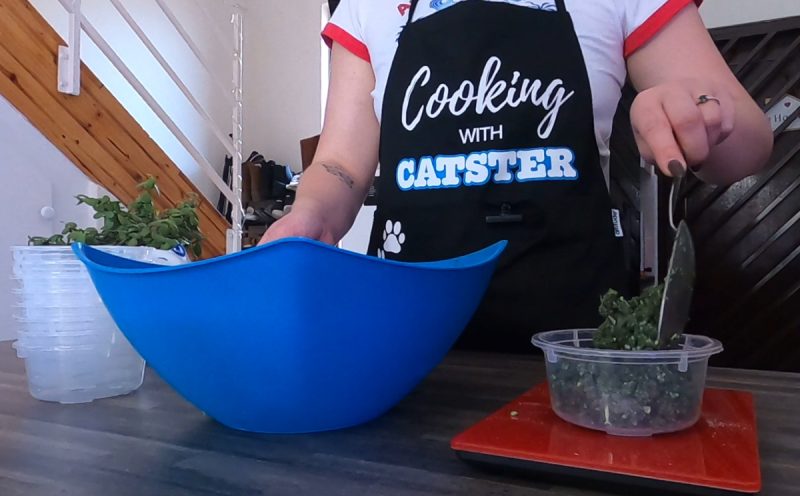
Upgrades (Optional)
Though my client was requesting a low-carbohydrate option, I did let her know that it was possible to add in another carbohydrate source for fiber in this diet if she was keen on it. Though not essential for a cat, fiber may offer them some health benefits (provided it is offered in reasonable amounts). In this case, I felt that a small amount of gently cooked carrots (around 65.7 grams) would be a good idea. Ivy, however, had different ideas and didn’t appreciate the carrots at all, so we decided to omit them.
In addition, my client was keen on a omega-3 fish oil for the recipe. While acceptable in small amounts (around 3 grams for this entire recipe), it’s important to note that any omega-3 or fish oils should only be added to a recipe when it’s being served to your pet. As such, I cautioned her against adding it to the base recipe.
Leftover Idea – “Mini” Hydration Treats
Another option with this recipe is to use the leftover water (in which the chicken hearts and breasts were cooked). Pour it into an ice-cube tray and freeze the water. The resulting ice cubes are a “protein” infused treat that you can melt and add to your cat’s meals as a form of extra hydration!
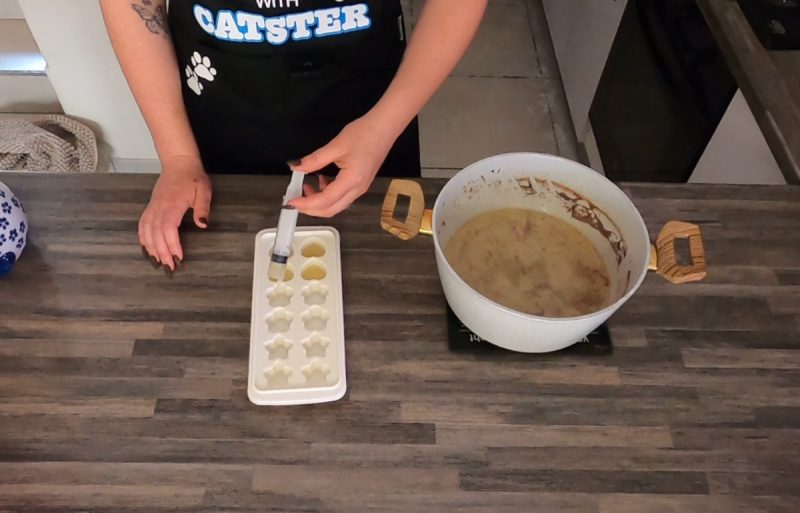
Spotlight Ingredient – It’s All In the Heart!
For most cat diets, nutritionists try to aim for a diet that comprises around 60-80% meat, fish, and eggs. Organs should typically only comprise around 10-30% of a diet. However, the heart is an exception to this rule.
Though an organ, the heart is a specialized muscle and doesn’t have to be offered in a restricted amount. In fact, it’s one of the best sources of taurine out there (an essential amino acid for cats), which is why this recipe features so much of this ingredient.
As far as organs (liver, gizzards, etc.) are concerned, the heart remains one of my absolute favorites for cats (and also dogs). I specifically enjoy using chicken hearts because their size makes them very manageable and easy to portion out for a diet. They also often end up costing less than the other parts of a chicken carcass and are therefore a more economical option.

Conclusion
Preparing meals for cats doesn’t have to be a daily grueling process in the kitchen. Indeed, it is possible to make multiple meals for your pet in a single cooking session – enough to last them for several days!
I hope this recipe helps highlight the point that though homemade diets do take some time and effort, there are still numerous ways you can make the process easy for yourself.
